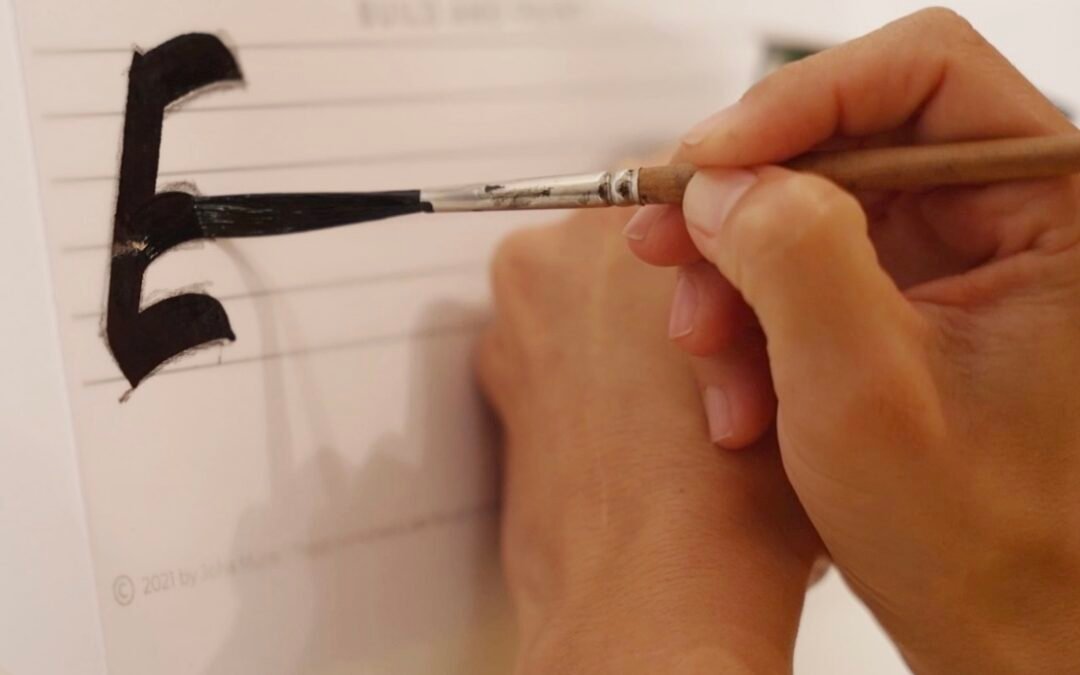Introduction
When it comes to calligraphy, the right tools can make all the difference. Among the various instruments available, calligraphy brushes stand out for their versatility and ability to create dynamic, flowing lines. Whether you’re a seasoned calligrapher or a beginner exploring this art form, understanding and using calligraphy brushes can unlock a world of creative possibilities.
What Makes Calligraphy Brushes Unique?
Calligraphy brushes differ from pens and markers in their design and functionality. They feature flexible bristles, which allow for a wide range of stroke widths depending on the pressure applied. This flexibility enables calligraphers to achieve the graceful, organic lines characteristic of traditional and modern brush calligraphy.
Types of Calligraphy Brushes
1. Natural Hair Brushes:
• Made from animal hair, such as sable or goat.
• Known for their softness and excellent ink retention.
• Ideal for traditional styles, like Chinese or Japanese calligraphy.
2. Synthetic Brushes:
• Made from synthetic fibers, offering durability and affordability.
• Provide consistent performance and are easy to clean.
• Perfect for beginners and modern calligraphy projects.
3. Water Brush Pens:
• Portable brushes with a built-in water reservoir.
• Suitable for watercolor calligraphy and blending techniques.
• A great choice for artists on the go.
Choosing the Right Brush for Your Style
• For Beginners: Start with a medium-sized synthetic brush or a brush pen to get comfortable with pressure control.
• For Traditional Calligraphy: Opt for a natural hair brush with a fine tip for precision and fluidity.
• For Modern Styles: Experiment with water brushes or broader synthetic brushes to create bold, expressive strokes.
How to Use Calligraphy Brushes
1. Master Pressure Control:
• Apply light pressure for thin strokes and heavier pressure for thick strokes.
• Practice transitioning between the two to develop consistency.
2. Maintain Proper Posture:
• Hold the brush at a comfortable angle, allowing the bristles to flow naturally.
• Relax your grip to ensure smooth, fluid movements.
3. Experiment with Inks and Papers:
• Use high-quality ink to achieve vibrant, even lines.
• Choose smooth, non-porous paper to prevent bleeding and feathering.
Caring for Your Calligraphy Brushes
• Clean After Each Use: Rinse brushes thoroughly with water to remove ink residues.
• Shape the Bristles: Reshape the tip of the brush gently to maintain its precision.
• Store Properly: Store brushes upright or flat to prevent damage to the bristles.
Why Choose Calligraphy Brushes?
Calligraphy brushes offer a level of expressiveness and control that few other tools can match. From delicate strokes to bold, sweeping lines, they allow artists to bring their vision to life with unparalleled elegance. Additionally, working with brushes can deepen your connection to the art, as their tactile nature encourages mindfulness and creativity.
Conclusion
Calligraphy brushes are indispensable tools for artists who value versatility and expressive design. Whether you’re creating traditional scripts, modern lettering, or experimental designs, these brushes provide endless opportunities for artistic growth. So pick up a brush, dip it in ink, and let your creativity flow!

